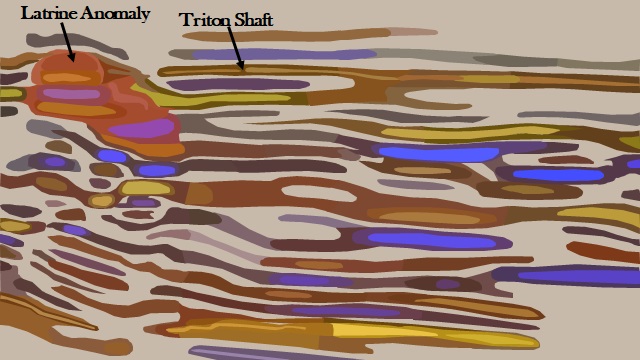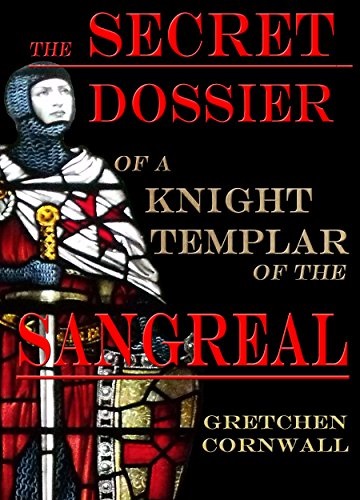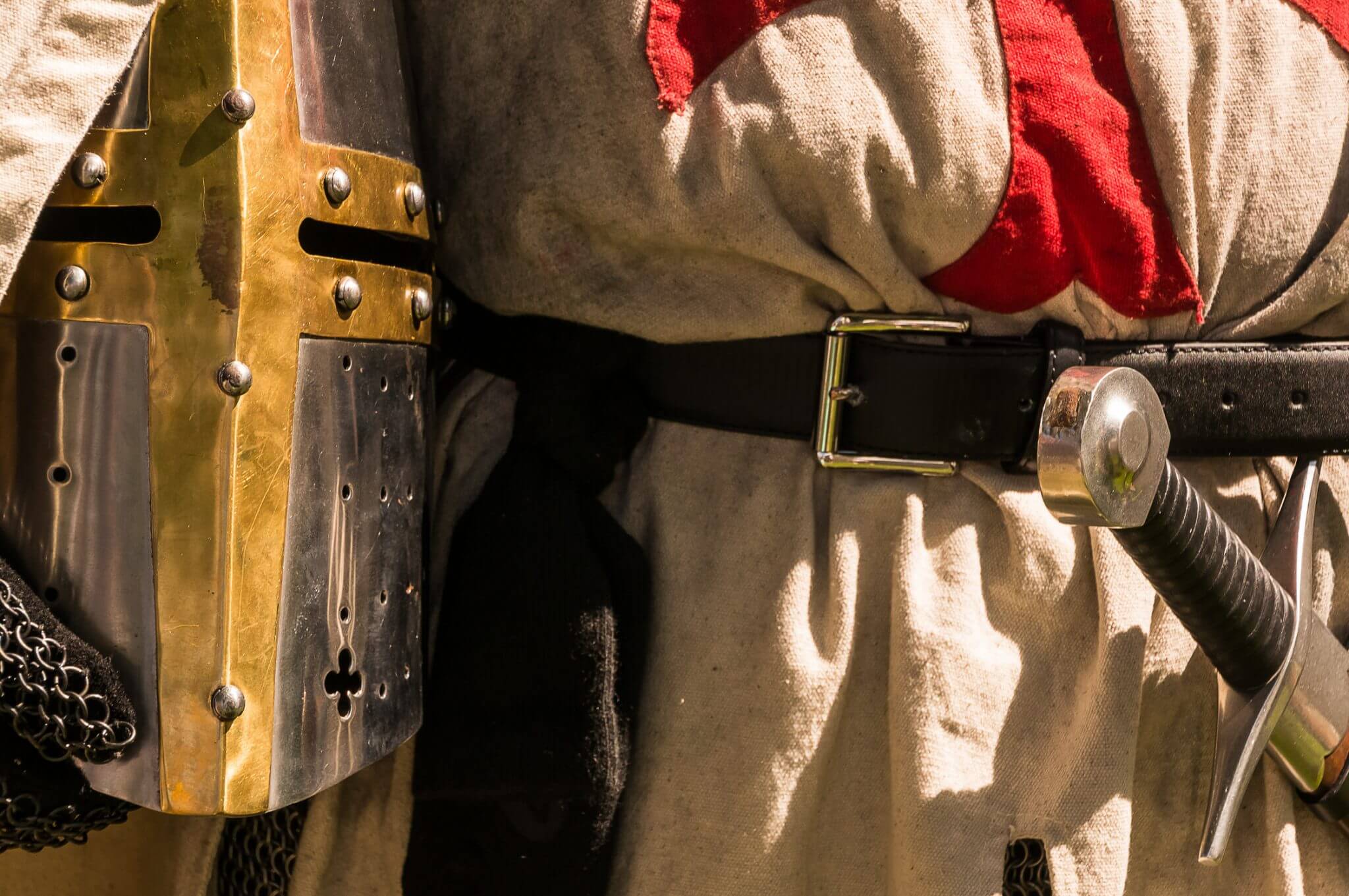The Curse of Oak Island: Season 6, Episode 6- Precious Metal
The following is a Plot Summary and Analysis of Season 6, Episode 6 of the History Channel’s TV series The Curse of Oak Island.
[SPOILER ALERT!]
Plot Summary

Rick Lagina and Craig Tester meet with Mike Jardine of Irving Equipment Ltd. at Smith’s Cove, where the cofferdam is under construction. Jardine explains that his crew is having some difficulty piling the cofferdam’s sheets through a particularly hard section of earth.
Later, the Oak Island crew meets in the War Room, where they call up Tobias Skowronek- a geochemist from the German Mining Museum in Bochum, Germany. Rick Lagina asks Skowronek whether he can help them identify the origin of the lead cross found on Smith’s Cove, to which the geochemist replies that he will only need the results of the laser ablation test conducted in the Season 6 premiere to determine where the lead for the cross was quarried. The Oak Island boys agree to send him the data.
Later, Craig Tester and Charles Barkhouse head to the Mega Bin area to oversee an exploration drilling operation. The narrator then informs us that, in the 1970s, Dan Blankenship discovered what he believed to be an ancient latrine hole in this area. Rick and Marty Lagina elaborate on this potential discovery in an interview, explaining that Dan believed the Latrine Hole to be an underground chamber connected to a network of tunnels beneath Oak Island, which the original Money Pit builders used for sanitation purposes. The narrator further explains that Blankenship’s theory corresponds with the results of the seismic survey revealed in Season 6, Episode 2, which indicated the presence of a 50-foot-deep underground cavern in the Latrine Hole area.

While the operation in the Mega Bin area is underway, Rick Lagina, Dan Blankenship, and Dave Blankenship drive to Smith’s Cove.
“My God,” remarks Dan Blankenship as their vehicle approaches the construction site, “you’ve made a 4-lane highway down here.”
“Well, when you see the crane, you’ll know why,” replies Rick.
Dan indeed marvels at the 300-ton crane and remarks that, once the cofferdam is complete, the crew should have a “relatively easy time” unearthing the U-shaped structure that he first discovered on Smith’s Cove in the early 1970s.
Back at the Mega Bin area, a core sample is taken from the Latrine Hole anomaly. The lower five feet of this sample, taken from 148-158 feet, is composed of what geologist Terry Matheson describes as “sandy till”. This soft, loose substance contrasts with the hard clay of which the remainder of the sample is comprised.

“To me, from a seismic standpoint,” says Craig Tester, “this may be the anomaly they were seeing.” Despite this setback, the crew decides to drill to a depth of 120 feet.
 Later, the Oak Island crew meets with in the War Room with Judy Rudebusch, a friend and research partner of the late Zena Halpern. Rudebusch informs the crew that she has been in correspondence with writer Gretchen Cornwall, author of the 2015 book The Secret Dossier of a Knight Templar of the Sangreal, and that Cornwall has some interesting information regarding a potential Templar voyage to the New World.
Later, the Oak Island crew meets with in the War Room with Judy Rudebusch, a friend and research partner of the late Zena Halpern. Rudebusch informs the crew that she has been in correspondence with writer Gretchen Cornwall, author of the 2015 book The Secret Dossier of a Knight Templar of the Sangreal, and that Cornwall has some interesting information regarding a potential Templar voyage to the New World.
The crew proceeds to call up Gretchen Cornwall and John Temple, the latter being Cornwall’s research partner who also, according to Rudebusch, also happens to be a “hereditary descendant” of a Templar knight. While Cornwall and Temple acquaint themselves with the Oak Island crew, the narrator tells us that Gretchen’s book, The Secret Dossier, tells of a “secret record which was passed down through generations of John Temple’s family, and which purports to document the survival of the Templar Order following their persecution and disbandment in France during the early 14th Century.”
Following the narrator’s exposition, Cornwall tells the crew her own theory regarding the origin of the Jolly Roger, a black flag bearing a white skull and crossbones, which was used by 18th Century pirates. Cornwall believes that the skull and crossbones was originally used by the Knights Templar, for whom it represented the bones of their patron saint, John the Baptist. Following the suppression of the Templar Order in 1307, many Templars “took to the seas”, settling in Scotland and Northern England. Some of these outlawed Templars became pirates, using their old symbol of John the Baptist as their ensign.

Gretchen Cornwall goes on to suggest that the Money Pit was constructed by members of the Knights Templar, and that it contains treasures which the Templars appropriated in the Holy Land during the Crusades. The evidence for this theory, Cornwall claims, is Nolan’s Cross– a feature which she believes represents the skull and crossbones. The “head stone” at the cross’ centre is the skull, while the cross itself constitutes the crossbones.

Next, Cornwall and Temple proceed to outline their theory that Nolan’s Cross “is literally the key” to the Money Pit. In order to unlock the Money Pit, they claim that one must first imagine shrinking Nolan’s Cross to a tenth of its size. This step is related to the medieval practice of tithing, in which 10% of every citizen’s income was given to the Church. That accomplished, one must then visualize picking up this smaller Nolan’s Cross and inserting it, top first, into the Money Pit. At the end of one of the arms is a treasure chamber, which would lie at a depth of about 72 feet, and at a 36-foot distance from the Money Pit.
As soon as Cornwall and Temple finish their presentation, Charles Barkhouse explains that their theory will be difficult to test, as the precise location of the original Money Pit is currently unknown. “It’s an interesting theory,” Rick Lagina concludes in a separate interview, “but you have to be able to take a theory into the field, and unfortunately… we’re not able to do that.”
Later that day, Craig Tester, Gary Drayton, and Terry Matheson oversee the drilling operation at the Mega Bin. The narrator reveals that the crew is currently drilling in the same area as the Triton Shaft, in which Dan Blankenship unearthed pieces of low-carbon steel wire at a depth of 120 feet back in 1973.

At a depth of 99.5 feet, the drill bites into a hard substance which driller Mike Tedford believes to be harder than slate. The narrator suggests that this substance might be the impenetrable object which Dan Blankenship’s drill encountered in 1973, immediately below the area containing the low-carbon steel wire. However, as we mentioned back in our analysis of Season 6, Episode 3, Blankenship encountered this mysterious object somewhere below a depth of 110 feet- more than ten feet deeper than this current obstruction. The drillers take a core sample of the hard substance, which Terry Matheson identifies as granite bedrock.

That evening, the crew gathers in the War Room and calls up Tobias Skowronek. The German geochemist informs them that he “compared the lead isotope data of the [lead cross]” with his own database and found that it was “somehow related to European deposits”, but did not completely match any quarries used from the 15th to 17th Centuries. He proceeded to compare the cross’ isotopic data with that of medieval quarries and found a match with old lead deposits in Southern France. More specifically, Skowronek believes that the lead was mined in an area between the Cevennes and Montagne Noire, two mountain ranges in South-Central France belonging to the larger Massif-Central Range. When prompted by Alex Lagina, the geochemist affirms that this particular quarry is situated in close proximity to the village of Rennes-le-Chateau, which Marty and Alex Lagina visited with Kathleen McGowan in Season 2, Episode 6. He goes on to say that this particular lead mine was used by the Romans, hinting at the possibility that the lead cross might even pre-date the Middle Ages.
Analysis
The Latrine Hole
In this episode of The Curse of Oak Island, an exploration drilling operation is conducted in the Mega Bin area, where the seismic survey conducted earlier this season indicated the presence of an underground cavern. Specifically, the operation is conducted in a location called the “Latrine Hole”, which we have seen as a label on Eagle Canada’s diagrams of the Mega Bin area, but which was not mentioned verbally prior to this episode.

We learn that Dan Blankenship drilled the Latrine Hole in 1973- the same year in which he drilled the more easterly hole upon which he would sink the Triton Shaft. For some reason not disclosed in the show, Blankenship came to believe that the Hole lay atop an underground chamber connected to a network of tunnels which run beneath Oak Island, and that the labourers who built these underground tunnels (along with the Money Pit) used the chamber as a toilet.

The results of the exploration drilling operation conducted in this episode revealed that vast underground anomaly in the Mega Bin area, the Latrine Hole chamber included, is not a chamber as some had hoped, but rather a pocket of sandy till surrounded by denser earth.
Gretchen Cornwall’s Theory
In this episode, writer Gretchen Cornwall- assisted by her research partner, John Temple- outlines her own Oak Island theory, which holds that the Money Pit was constructed by 14th Century Templar knights.

Cornwall’s theory is fully outlined in her 2015 book The Secret Dossier of a Knight Templar of the Sangreal. In this book, she claims that John Temple (whose name is an alias) bears the title “Comte de Mattinata de Medici”, and is a descendant of “Henry Mattinson”, the alleged secret twin brother of King Louis XIII of France.
About half-way into her book, Cornwall introduces the reader to the “Matrix Map”- a map of the world dotted with stars and crisscrossed with “magnetic lines”, which John Temple had given her. The writer of this article has not read enough of the book to fully ascertain Cornwall’s interpretation of this document, although the information he gleaned from a lazy skim-through seems to indicate that Cornwall attempts to connect the “Matrix Map” with the legendary lost island of Atlantis. This author is under the impression (although is admittedly far from certain) that the “Matrix Map” is the titular “Secret Dossier” alluded to in the title of Cornwall’s book, and in this episode of The Curse of Oak Island.
The Skull and Crossbones
In this episode, writer Gretchen Cornwall shared her theory that the Jolly Roger- the black pirate flag bearing a white skull and crossbones- was invented by the Knights Templar, for whom it represented the bones of their patron saint, John the Baptist. She further suggested that Nolan’s Cross, with its skull-shaped centre-stone, is a Templar depiction of this symbol.

Cornwall elaborates on this theory in a YouTube video entitled The Secret Behind the Jolly Roger. In this video, she claims that the Jolly Roger was first flown by King Roger II of Sicily (1095-1154), an early patron of the Knights Templar (This claim was first put forth by American writer David Hatcher Childress in his 2003 book Pirates and the Lost Templar Fleet: The Secret Naval War Between the Knights Templar and the Vatican.). Instead of repeating the aforementioned theory involving the bones of John the Baptist, she proposes that the skull and crossbones are based on either the manner in which bones are arranged in ossuaries (receptacles for bones of the deceased) or an alleged early depiction of the Christian cross. This theory conflicts with the accepted history of the Jolly Roger, which holds that this flag is an invention of 18th Century Caribbean pirates.

Cornwall’s hypothesis is not the first Oak Island theory involving the skull and crossbones. Some theorists, observing that the legend of the discovery of the Money Pit appears to be riddled with Freemasonic symbolism, have speculated that members of some sort of Freemasonic fraternity are behind the Oak Island mystery. Some of these theorists believe that Freemasonry is descended in some way from fraternities formed by outlawed Templar knights of the early 14th Century, and suspect that the legendary lost Templar treasure is buried on Oak Island. As evidence for this supposed connection between the Templars and the Freemasons, some of these theorists have cited the appearance of the skull and crossbones- an important Freemasonic symbol- in a legend surrounding the death of Jacques de Molay, the Templars’ last Grand Master, who was burned to death in a Paris square on March 18, 1318, for the heresy of which his Order was accused.

According to this legend, several French Templar knights who had gone into hiding approached de Molay’s pyre long after the embers had cooled. All that remained of their Grand Master was his skull and femurs. From that time on, the underground, outlawed Templars adopted the skull and crossed femurs as one of their symbols.
The Lead Cross Analysis

In this episode of The Curse of Oak Island, German geochemist Tobias Skowronek informs the team that an analysis of the isotopic signature of the lead cross indicates that the artifact is composed of lead mined in the Middle Ages not far from Rennes-le-Chateau, France. This theory accords perfectly with the Knights Templar theory frequently pushed by the show.
The metallurgical analysis of the cross, coupled with the questionable archaeological analysis of the alleged pilum tip (presented in Season 6, Episode 4), suggests to the skeptical viewer that the producers of The Curse of Oak Island (COOI) may be engaging in the regrettable practice twisting reality to fit popular theories; if the show’s interpretations of these artifacts are correct, then the lead cross and the pilum tip constitute the first real pieces of evidence that the Knights Templar or the Ancient Romans, respectively, are behind the Oak Island mystery- an unlikely (albeit not impossible) scenario. The ‘pilum’ diagnosis, when considered alongside the many alternative (and far more plausible) identification theories put forth by COOI fans on social media, seems to suggest that Gabriel Vandervoort (the California-based antiquities expert who made the pilum diagnosis) was chosen to appear on the show specifically to bolster the popular ‘Pre-Columbian Voyager’ theory first introduced by J. Hutton

Pulitzer in Season 2, Episode 2. Similarly, the tangible connection between the lead cross and the Templar theory established in this episode, considering its confliction with all of the evidence acquired the previous season pointing to a late 17th/early 18th Century Money Pit, almost suggests that the cross was planted by the show’s producers. This unsettling possibility evokes a revelation from Randall Sullivan’s new book The Curse of Oak Island: The Story of the World’s Longest Treasure Hunt, which holds that the Lagina brothers threatened COOI producer Kevin Burns that they would terminate the show if they ever proved that he or a member of his crew had planted an artifact on the island.
Want to Help?
Thanks for reading! If you enjoyed this article and would like to help support this website, please check out our online bookstore:







Leave a Reply